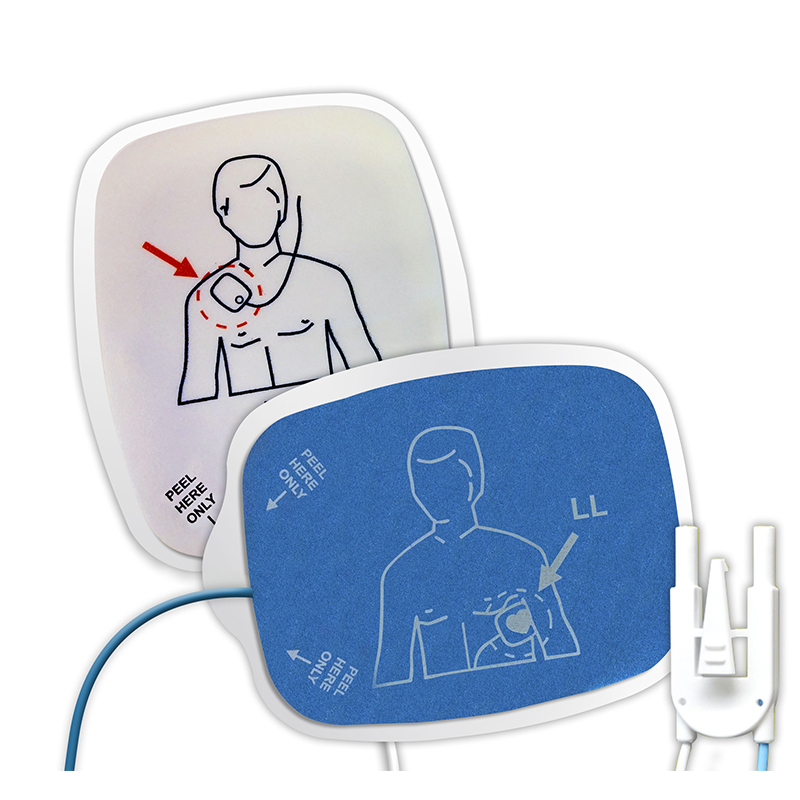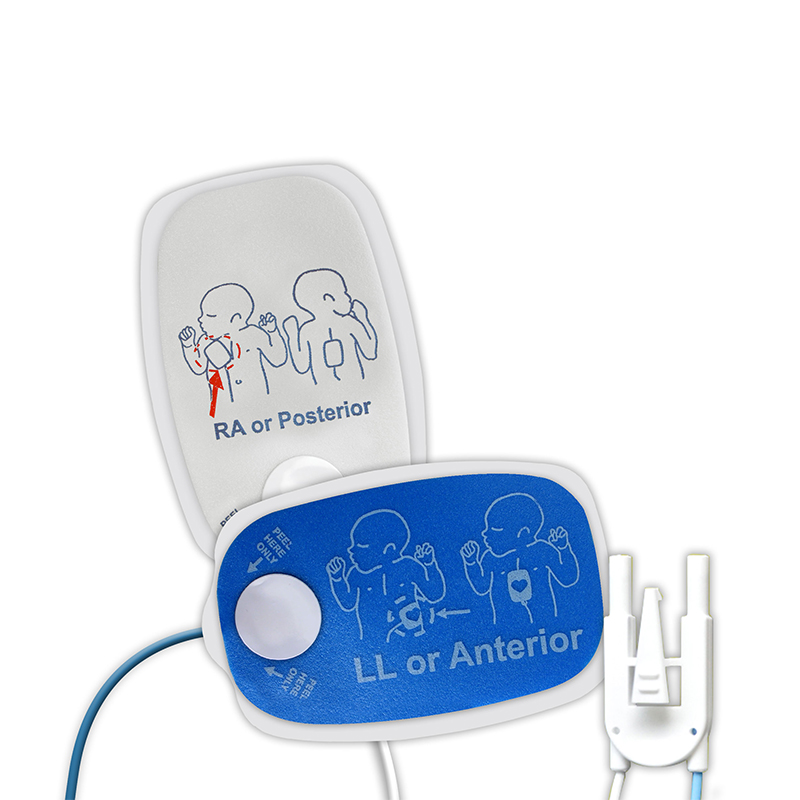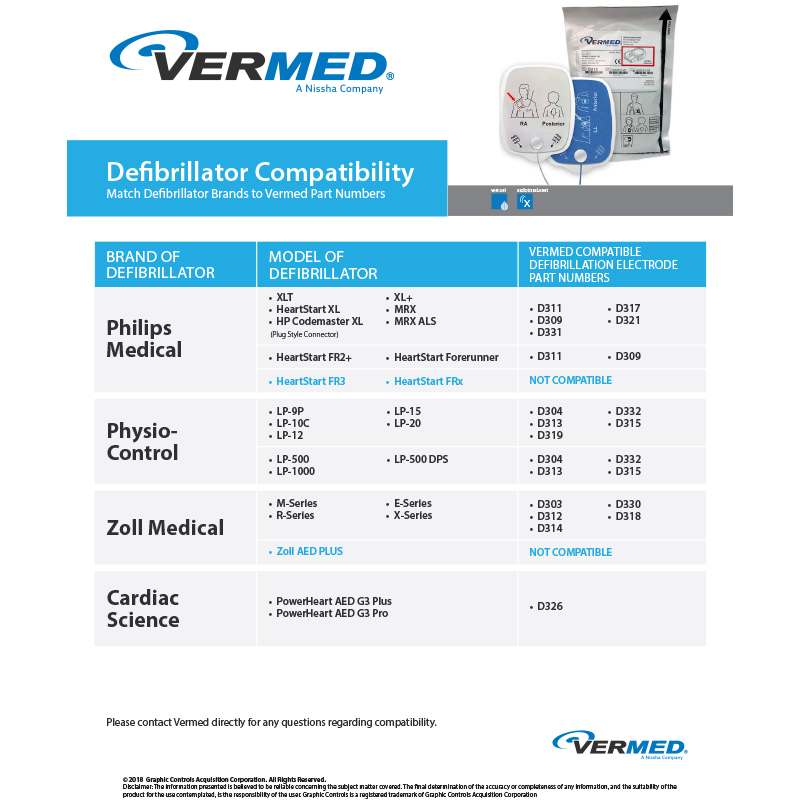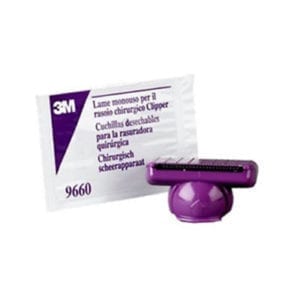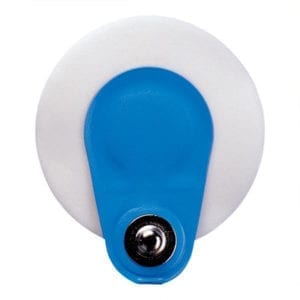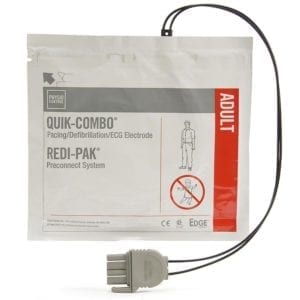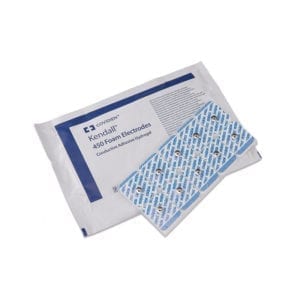Vermed Defibrillator Electrode Pad, Zoll, Radiolucent
From: $36.50
Buy NowCompatibility: Zoll
• R-Series
• X-Series
Not Compatible with Zoll AED Plus or Zoll AED Pro
*HeartSync pediatric defibrillation electrodes are NOT compatible with AED’s. AED’s cannot be manually adjusted to reduce energy delivery. Please refer to your AED’s manufacturer operation manual.
Description
Nissha Medical Technologies’ HeartSync Defibrillation Electrodes are designed with your needs in mind. Featuring the longest leadwires, 36-month shelf life and ease of placement, they will meet the needs of your clinical staff.
*HeartSync pediatric defibrillation electrodes are NOT compatible with AED’s. AED’s cannot be manually adjusted to reduce energy delivery. Please refer to your AED’s manufacturer operation manual.
• 36 MONTH SHELF LIFE: LONGEST ON THE MARKET. Extended shelf life reduces waste and saves money
• 60 INCH LEADWIRES: LONGEST ON THE MARKET. Increased flexibility with equipment placment & clinician mobility
• ADVANCED HYDROGEL: Unique gel provides maximum adhesion
• SMALLER PAD SIZE: Allows for easier placement without crowding
• LARGER CONDUCTOR PLATE: Larger conductive area disperses energy more effectively
Compatibility: Zoll
• R-Series
• X-Series
Not Compatible with Zoll AED Plus or Zoll AED Pro
Product Details
Vermed defibrillator electrode pads are the premier choice for EMS AED needs. These pads were designed with the needs of medical professionals, including common problems that need to be addressed; Vermed then evaluated and improved upon other defibrillator pads to create the best option on the market.Vermed improvements include the following:
• 36-month shelf life
• 60-inch lead wires
• Proprietary adhesive gel
• Smaller pad size
• Larger conductor plate
• Connector standardization
Vermed’s 36-month shelf life is the longest lifespan on the market, which helps healthcare clinicians focus on the patient and not worry if products are out of date. It also increases cost savings and reduces waste, eliminating the need to throw out unused pads.
The 60-inch lead wires are the longest on the market and give the user more flexibility in placing equipment while helping to provide easy access to the patient.
Bigger is not always better — the smaller pad size allows for easier placement on the patient and avoids potential crowding. However, its larger conductive area on the smaller surface disperses energy more effectively, and the advanced hydrogel provides maximum adhesion to ensure a safe connection. Connector standardization also increases safety and compliance with safety standards.
Defibrillator Pads with Advanced Compatibility
There is no need to buy more equipment when switching to the Vermed defibrillator pads. Vermed pads are compatible with many brands, including Philips Medical (HeartStart, MRX ALS), Physio-Control (LifePak), Zoll Medical, and Cardiac Scene (PowerHeart).
Try Vermed pads with the following Zoll machines:
• M-series
• E-series
• R-series
• X-series
• ZOLL AED Plus
Not only will these pads work with many medical devices, but they also fit a variety of patients. Vermed electrode pads come in sizes for both adults (radiolucent) and pediatric. These Vermed pads, or the Nissha Medical Technologies’ HeartSync Defibrillation electrodes, are designed with you in mind. As the leader in medical supplies, Vermed knows what clinical staff requires for proper patient monitoring and improves their medical products to solve their problems.
Applying the VERMED Defibrillator Electrode
Before applying the pad, you must first prep the skin with soap and water. Application sites must be clean, dry, and free of any body lotions. If electrode adhesion could be an issue, do not clean the skin with isopropyl alcohol. If alcohol is used, ensure that the skin is dry before applying the pad. Prepare the skin by removing any excess hair from the area and mark the skin by making an “X” on the area of application.
After the area is clean and free of excessive hair, apply the electrode. Avoid pressing on the stud when the electrode is on the patient. Before removal, loosen one side of the electrode. Then, grasp the full width of the electrode and gently pull it back over itself. Whenever possible, remove electrodes in the direction of hair growth. Keep the electrode close to the skin surface as you peel it back and support the skin with another finger to ensure a pain-free removal for the patient.
Note: Vermed defibrillator electrode pads can cause serious injury if misused and should only be used by medical professionals.



